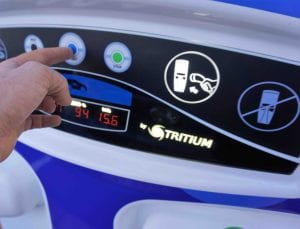
The results of a research project funded by the European Union on how to best keep electric vehicles powered in the future proposes charging them wirelessly – via the road itself.
Called the European Fabric project, and funded by the 7th Framework Programfor research and innovation, the results were presented this week at the Polytechnic University of Turin.
The project, started in 2014, was conducted by a consortium of 25 partners from 9 European countries, including the Energy Department of the Turin Polytechnic.
The Fabric project focused on one of the biggest limits to the spread of large-scale electric cars: charging batteries. The development of battery technology conducted in recent years has led to a strong increase in performance, bringing the range of an electric car up to a few hundred kilometres.
On the other hand, recharging of EV batteries can still take a long time, during which the vehicle must be stationary and connected to the charging station.
Not a problem if you are driving your car in the city and can rely on night-time charging, or at work, but the situation becomes more challenging if you are planning a longer trip. It is the primary cause of what is known as “range anxiety”.
The Fabric project says cars could recharge while traveling on motorways equipped with special systems that allow the wireless charging of the batteries while the vehicle is moving.
The benefits are definitely apparent.
Frequent stops to recharge would no longer be an issue, and such a system would also reduce the need for high capacity of batteries in the future (and hence also the weight, range and cost of the car), once a sufficient network of self-charging roads and motorways were implemented.
So far, the system has been tested in a test circuit in Susa (TO) at the Centro Guida Sicura MotorOasi Piemonte center within Fabric, using a technology called inductive power transfer (IPT).
This works thanks to the transmission of electricity through resonant inductors – the same technology originally proposed by Tesla – that allows us to recharge our toothbrushes without a plug.
Wireless induction technology as it is otherwise called, does not require any electrical contact.
This introduces numerous advantages in terms of safety and ease of use, and presents a considerable reduction in maintenance requirements, but above all the elimination of external installations such as charging columns, which would be subject to accidents or vandalism.
The example of the rechargeable toothbrush uses a minute amount of energy compared to an electric vehicle however.
To show that it is in fact possible, a second prototype was built at Susa, which does not require the vehicle to be stopped while charging: that is, dynamic IPT.
The basic unit of an IPT system for automotive application consists of a fixed coil, located below the road surface, indicated as a transmitter, and a coil installed on the vehicle called the receiver.
In the Susa circuit, 50 transmitting coils were installed, capable of sending energy to a receiver positioned on board a light commercial vehicle.
In the short term, the introduction of a dynamic IPT would completely eliminate the need for recharging stops and greatly reduce the capacity of the batteries installed in the vehicle.
In applications on fixed routes, such as in public transport, the use of the dynamic IPT could result in the almost total elimination of batteries whose presence is due solely for backup requirements.
Could such a system have potential for Australia’s road networks?
We are a large country, and going on the length of roads alone, Australia ranks 11th in the world.
Although, compare that to the total of Europe’s 6 highest ranking countries – France, Spain, Germany, Sweden, Italy and Finland – and we have less than 20% roads to cover in comparison.
But we are also a country of large distances between regional centres and metropolitan areas, and as such perhaps dynamic IPT would be better placed with in urban areas as a solution for zero-emission public transport.
Whatever the case, the creation of a self-charging road network, while likely to present challenges for those involved in its implementation, could represent a decisive turning point EVs, if not in Australia, at least in Europe.










